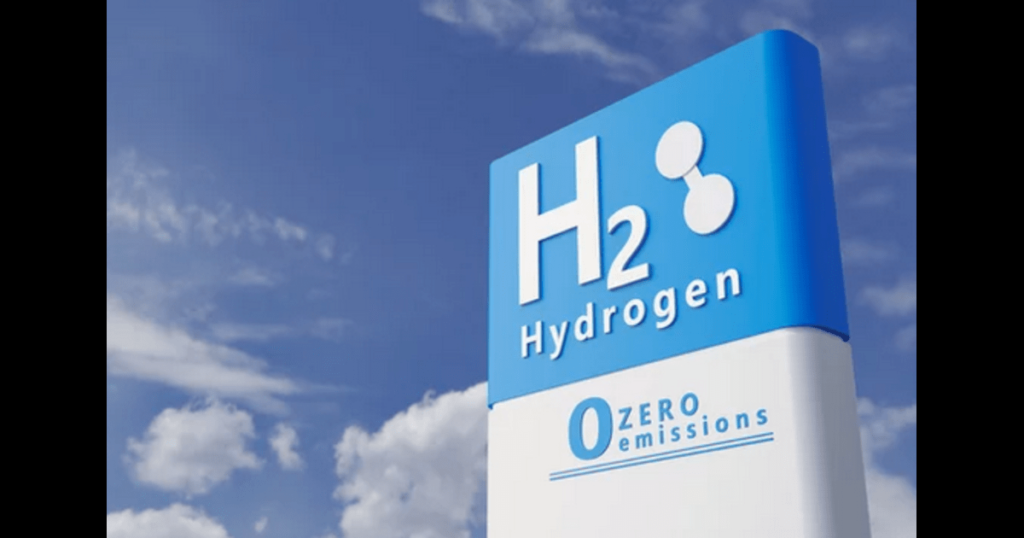Islands face a unique paradox when it comes to renewable energy. Surrounded by water yet chronically short of it. The Canary Islands are a great example. With desalination capacity reaching 731,000 cubic metres daily across the archipelago, they’ve become global leaders in turning seawater into drinking water. Now, as these islands embrace hydrogen production to decarbonise critical infrastructure like hospitals, water has a new purpose. But, this time as the core for clean fuel.
The H2Heat project in Gran Canaria brings this water challenge into focus. A half-megawatt electrolyser splits water molecules to produce hydrogen for heating the island’s University Maternal and Children’s Hospital. Simple chemistry on paper. Complex reality on the ground. Because producing hydrogen at scale demands vast quantities of ultra-pure water, and on water-scarce islands, every litre counts.
This is about finding the right water, treating it properly, managing the waste streams responsibly, and doing all of this adjacent to healthcare facilities where water quality and environmental standards are non-negotiable.
Water used to create Hydrogen
Electrolysis sounds straightforward until you examine what it actually requires. Pass electricity through water and you get hydrogen at the cathode, oxygen at the anode. But the water feeding this reaction must meet exacting specifications. We’re talking about purity levels that would make pharmaceutical manufacturers nod in recognition.
Alkaline electrolysers, like the Stargate Hydrogen deployed in the H2Heat project, demand water quality equivalent to ASTM Type II standards or better.
That means conductivity below 1 microsiemens per centimetre, with total dissolved solids under one part per million. Contaminants like calcium, magnesium, chlorides, or silica wreak havoc on electrolyser stacks, causing scaling, corrosion, and membrane degradation that can slash efficiency and force expensive premature replacements.
The volume requirements scale rapidly. Producing one kilogramme of hydrogen theoretically consumes about nine litres of water in the electrolysis reaction itself. But that’s misleading.
The real number sits closer to 35 litres per kilogramme when you factor in cooling water, rinsing cycles for purification systems, and water lost during treatment. A one-megawatt electrolyser running at 74 percent efficiency to produce 74 tonnes of hydrogen annually needs roughly 2,600 cubic metres of ultra-pure feedwater.
Then there’s the reject water from purification systems. Reverse osmosis plants typically recover 50 to 75 percent of input water as product, meaning 25 to 50 percent becomes concentrated brine. An electrolyser demanding 2,600 cubic metres of ultra-pure water might require 3,500 to 5,200 cubic metres of desalinated input, generating 900 to 2,600 cubic metres of concentrated waste annually. That waste can’t simply vanish.
Island Water Scarcity Meets Hydrogen Ambition
The Canary Islands have wrestled with water scarcity for decades. Annual rainfall across the archipelago averages a meagre 200 to 300 millimetres, with high evapotranspiration rates and porous volcanic soils that don’t retain moisture well. Natural aquifers suffered over-exploitation for agriculture and tourism, forcing a wholesale shift to desalination beginning in the 1960s.
Today, desalination provides roughly 80 percent of municipal water in some islands like Lanzarote and Fuerteventura. Gran Canaria operates multiple large reverse osmosis plants, with the sector consuming about 120 to 180 gigawatt-hours of electricity annually just to produce drinking water.
Energy represents 40 to 60 percent of desalinated water costs, creating direct competition between water production and other electrical loads.
The Canary Islands Health Service’s Zero Net Emissions 2030 strategy envisions scaling the H2Heat model across ten hospitals.
If each installation mirrors the Gran Canaria pilot at one megawatt electrolyser capacity, the collective annual water demand would approach 26,000 cubic metres of ultra-pure feedwater, requiring perhaps 35,000 to 52,000 cubic metres of desalinated input.
That volume, whilst substantial, remains modest compared to total desalination capacity. But the challenge isn’t just volumetric. It’s about purity, reliability, proximity, and integration. Hospital-adjacent hydrogen facilities need consistent water supply with zero interruptions, because a hospital heating system can’t tolerate electrolyser downtime during winter cold snaps.
Water-energy nexus considerations loom large. When the island’s offshore wind turbines spin at full capacity, abundant renewable electricity can power both electrolysis and desalination simultaneously.
Desalination Technologies and Treatment Pathways
Seawater desalination has matured dramatically over the past two decades. Reverse osmosis dominates modern installations, using pressure to force water molecules through semi-permeable membranes that reject salts and contaminants. The Canary Islands Institute of Technology pioneered renewable-powered desalination systems starting in the 1990s, testing wind-driven reverse osmosis at Pozo Izquierdo with excellent results.
A typical seawater reverse osmosis plant starts with intake screening to remove seaweed, debris, and marine organisms. Pre-treatment follows, using coagulants to clump fine particles, followed by multi-media filtration. High-pressure pumps then push the pre-treated seawater through reverse osmosis membrane arrays at 55 to 70 bar pressure. Product water, now with 99 percent of salts removed, flows to storage. The concentrate stream, brine at roughly twice seawater salinity, 3rexits for disposal.
But reverse osmosis product water, whilst excellent for drinking, doesn’t meet electrolyser purity requirements. A secondary treatment train is essential. This typically involves mixed-bed ion exchange resins or electrodeionisation to strip residual dissolved salts, achieving the ultra-low conductivity demanded by electrolysers. Some designs incorporate UV sterilisation to eliminate bacteria that could form biofilms in electrolyser water circuits.
Cost structures matter enormously. Desalination expenses in the Canary Islands range from 0.60 to 1.50 euros per cubic metre depending on plant scale and energy prices.
Adding ultra-purification for electrolyser feedwater might add another 0.20 to 0.40 euros per cubic metre. When producing hydrogen, water treatment adds roughly 0.035 to 0.067 euros per kilogramme of hydrogen—small compared to electricity costs but non-trivial at scale.
Hospital-Adjacent Siting and Integration Opportunities
Placing hydrogen production equipment near hospitals creates unique constraints and opportunities. Hospitals consume enormous quantities of water.. A 500-bed facility might use 500 to 1,000 cubic metres daily for patient care, laundry, sterilisation, cooling towers, and irrigation.
Co-locating desalination and electrolyser facilities with hospitals opens interesting synergies. The oxygen byproduct from electrolysis, which the electrolyser produces at 99.7 percent purity, can be purified to medical grade and piped directly into the hospital medical gas system. This closes a valuable loop, eliminating tanker deliveries of liquid oxygen and their associated carbon footprint.
Water infrastructure integration offers another synergy. If the hospital operates its own desalination or advanced water treatment for specialised applications—high-purity water for renal dialysis, for instance—the hydrogen facility could share infrastructure, distribution, and maintenance costs.
But proximity creates challenges too. Brine disposal from the desalination plant requires careful environmental management, and hospitals often sit near populated areas with heightened sensitivity to marine ecosystem impacts. Noise from high-pressure pumps, compressors, and cooling equipment must stay within limits appropriate for healthcare settings.
The Brine Challenge
Brine disposal represents one of desalination’s thorniest environmental challenges, and it intensifies when co-located with hospital hydrogen production. The concentrated waste stream from reverse osmosis contains not just elevated salinity, typically 65 to 85 grammes per litre compared to seawater’s 35 grammes, but also residues of pre-treatment chemicals, antiscalants, cleaning agents, and metal corrosion products.
The Canary Islands currently discharge most desalination brine directly to the ocean through diffuser systems that promote rapid dilution. But this practice increasingly conflicts with the Water Framework Directive and Marine Strategy Framework Directive, which mandate good ecological status for coastal waters. Studies show that brine plumes can increase localised salinity by 5 to 10 practical salinity units within hundreds of metres of outfalls, stressing benthic communities adapted to stable conditions.
Alternative disposal methods exist but come with trade-offs. Zero liquid discharge systems push desalination to its logical conclusion, recover every possible drop of water, leaving only dry salts. Thermal crystallisers evaporate brine to produce solid residues, which can be landfilled or potentially used in construction materials. The technology exists but energy consumption and capital costs remain prohibitive for all but the highest-value water applications.
Innovative approaches are emerging. Selective electrodialysis can fractionate brine into separate streams of sodium chloride, calcium chloride, and magnesium chloride, each with potential commercial value. Some designs integrate with chloralkali processes to produce hydrogen, chlorine, and sodium hydroxide from brine—creating a circular model where desalination byproduct becomes chemical feedstock.
For hospital-adjacent hydrogen facilities, brine management strategy must align with institutional sustainability goals and community expectations. A hospital’s environmental stewardship reputation could suffer if associated hydrogen production creates marine pollution visible to the public or documented by environmental monitoring.
Integrated Water-Hydrogen Systems
The optimal approach moves beyond treating water, hydrogen, and hospitals as separate systems toward integration that exploits synergies and closes resource loops. The H2Heat project embodies this thinking, though opportunities exist to deepen the integration further.
Electrolysers operating at 74 percent efficiency reject roughly 260 kilowatts as waste heat for a one-megawatt unit. Rather than dissipating this through cooling towers, it could pre-heat reverse osmosis feedwater, improving membrane performance and reducing viscosity for easier pumping.
The hospital end of the chain offers more integration points. The 2G hydrogen-CHP unit generates 372 kilowatts of heat and 360 kilowatts of electricity. Some of that heat serves hospital needs directly, but any excess could drive absorption chillers for cooling, offsetting electricity demand.
Water quality monitoring creates another integration opportunity. Hospitals require extensive water quality testing for Legionella control and regulatory compliance. The electrolyser needs continuous monitoring of feedwater conductivity, pH, and dissolved ions. Combining these monitoring programmes reduces duplicated infrastructure and labour.
The Path Forward
Water emerges as both enabler and constraint for island green hydrogen economies. The technical feasibility of producing hydrogen from desalinated seawater is proven. The H2Heat project demonstrates that renewable energy can power the entire chain from seawater intake through desalination, ultra-purification, electrolysis, and end use in critical infrastructure like hospitals.
The answer requires systems thinking that transcends traditional boundaries. Water specialists, hydrogen engineers, marine ecologists, healthcare administrators, and community stakeholders must collaborate from project inception through operation. Design decisions about electrolyser siting, desalination technology, brine management, and hospital integration ripple through environmental, economic, and social dimensions.
Islands worldwide face similar challenges. The Canary Islands’ leadership in renewable desalination and emerging role in hydrogen valleys positions them to share knowledge with the Aegean islands, Azores, Madeira, Caribbean islands, and Pacific atolls. What works in Gran Canaria can inform approaches elsewhere, whilst their innovations flow back to enhance Canary practices.
Water scarcity need not block island hydrogen futures. With thoughtful design, circular thinking, and integrated approaches that treat water as part of a larger resource ecosystem rather than a standalone input, islands can leverage their abundant marine resources and renewable energy potential to build sustainable, resilient energy systems. So there you have it, how to use water to create hydrogen on islands!
Sources
- PTx Hub, “A first look at water demand for green hydrogen and concerns with desalination,” 2024
- Stargate Hydrogen, “Hydrogen Purity: How Pure Is Pure Enough?” 2025
- Greening the Islands, “As Islands Move Towards a Green Economy, Water Desalination Can Play a Crucial Role,” 2024
- IRENA, “Renewable Desalination Technology Options for Islands,” 2015
- UK Government, “Water Demand for Hydrogen Production,” 2024
- Hydrogen Council Australia, “Water for Hydrogen Technical Report,” 2023
- UN Case Study, “Sustainable Desalination, Renewable Energy in the Canary Islands,” 2020
- Pulitzer Center, “Green Desalination: How To Solve the Brine Crisis?” 2025



